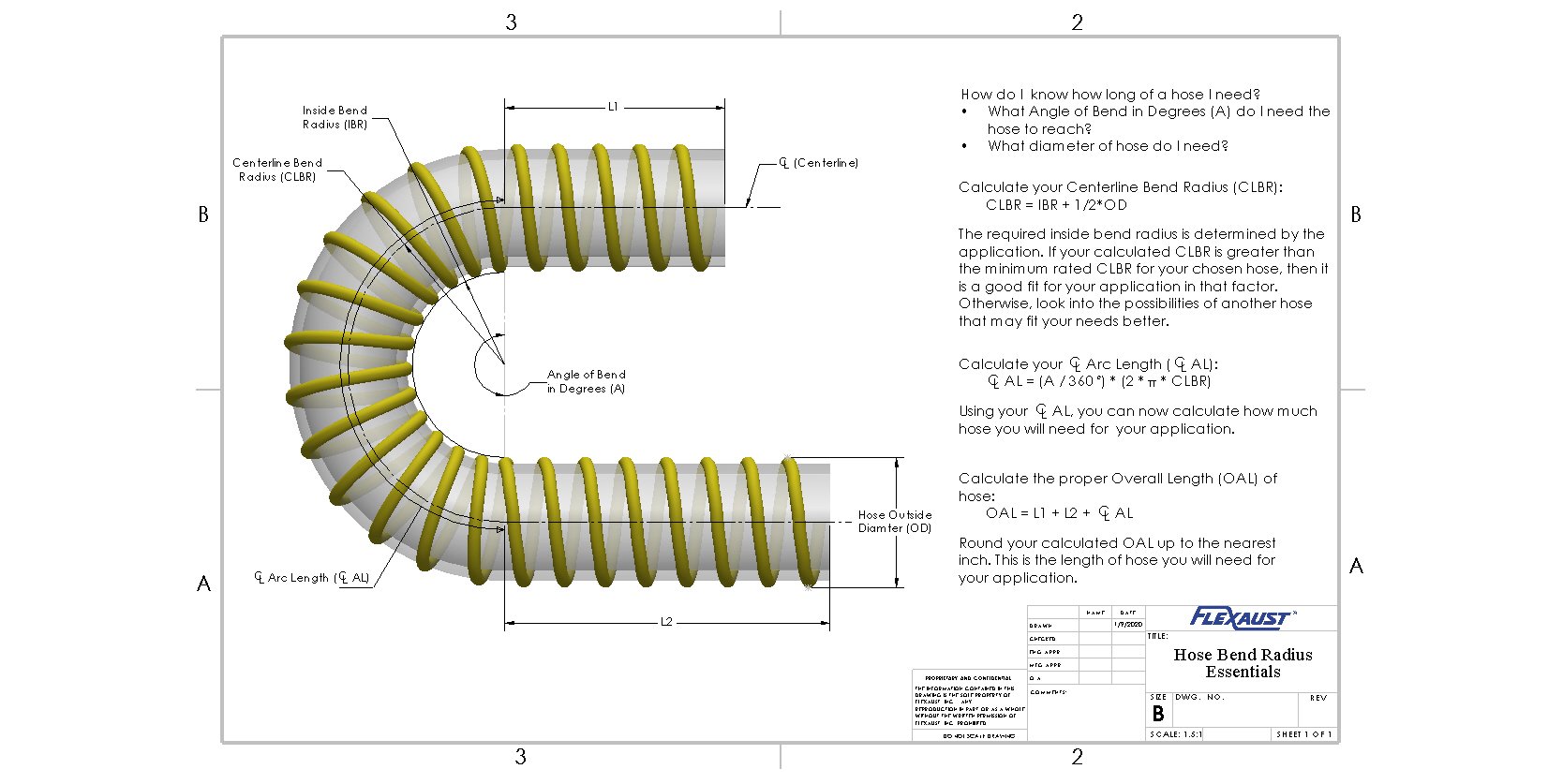A hose’s bend radius determines how long a hose needs to be before it can safely bend while in service. Understanding bend radius helps ensure a hose will have the necessary strength and functionality for its intended use case. Failing to account for bend radius limits will ultimately cause damage to hoses and shorten their usable service life.
What is Bend Radius?
The minimum bend radius represents the minimum distance a hose can be bent without causing lasting damage. There are two different ways to measure minimum bend radius—inside radius or centerline radius.
- Inside radius measures the radius of the bent hose to its innermost surface.
- Centerline radius measures the radius to the centerline of the hose or flexible duct.
At Flexaust, we use the centerline bend radius method of measurement when determining appropriate hose lengths.
Most hoses must bend frequently throughout their service life, so accounting for flexibility requirements ahead of time often saves a great deal of hassle in the long run. Bending a hose more sharply than its design permits places undue stress on its reinforcements. This may cause kinking and distortions in the hose, which will noticeably decrease its life and functionality. Additionally, over-bending a hose can easily restrict flow, leading to further complications.
To avoid these problems, users should calculate the minimum bend radius to determine the minimum length of hose required for a given application.
How to Calculate Bend Radius
The minimum bend radius formula is: L = A/360° x 2πr. The variables in this equation are defined as:
- L: The minimum length of the hose that needs to bend
- A: The angle of the bend
- r: The bend radius of the hose
- π: 3.14
Using this formula, the minimum required length of a hose can be determined for any situation. If, for example, a manufacturer needed a hose that could bend at 45° and had a bend radius of three inches, then the minimum length of hose needed would equal 45°/360° x 2(3.14)(3), or 2.355 inches.

Work With Flexaust
Understanding how to calculate bend radius during hose selection makes it easier to choose an appropriate length of hose. By taking the time to make these calculations upfront, users will ensure optimal functionality and service life from their hoses.
At Flexaust, our team can help customers determine the most appropriate hose type and length for specific applications. For more information or assistance with hose selection, please contact us or request a quote today

